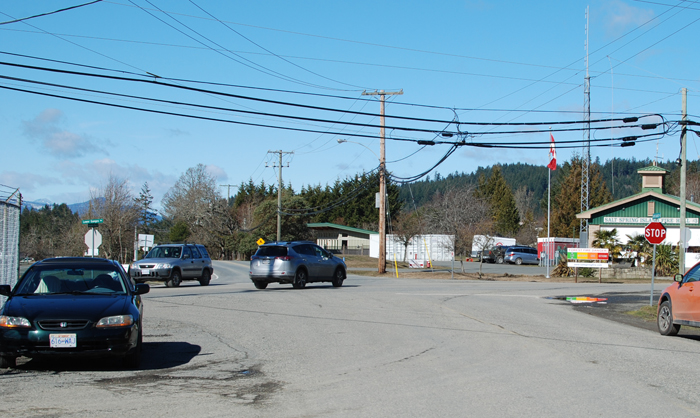Where to best focus safety improvements on Salt Spring’s dangerous roads is an ever-changing opinion, depending on which intersection a person happens to frequent and/or has faced a close call.
What to do about those hazardous sites forms an equally difficult line of conversation, as evidenced at the most recent meeting of the Salt Spring Transportation Commission. The commission voted on Feb. 25 to advance some areas of concern to the Ministry of Transportation and Infrastructure, based on a list of locations brought forward by a member of the public.
Capital Regional Director Gary Holman said he is committed to taking the commission’s request to the ministry, but he also feels that more attention could be focused on the overall situation and how to deal with it.
“This is a start, but I think we need to take a broader, more strategic approach,’” Holman said. “People are approaching the commission with advocacy issues, which is not a bad thing, but over time we need to develop a systematic approach to road safety because, a) resources are thin, and b) you can’t tell MoTI to do anything, but you can hold their feet to the fire.”
While close-calls and actual road incidents may feel all too frequent for residents, the numbers may not add up to what the ministry considers as warranting action. As well, sites of specific interest to some islanders may not reflect the areas where the ministry might agree to act.
“Safety is our top priority and we are always looking at ways to further improve safety on our highways, roads, bridges and at intersections,” the ministry told the Driftwood. “It is important to note that the ministry identifies collision-prone locations based on serious collisions (injury or fatality).”
Prior to 2012, the Central intersection of North End, Lower Ganges, Upper Ganges and Vesuvius Bay roads experienced by far the most crashes compared to other Salt Spring intersections. There were 32 reported crashes during the five-year period of 2006 to 2010. It took a community petition with 700 signatures and a concerted campaign by the transportation commission and other community members to convince MoTI to change the intersection to a four-way stop, following a particularly bad crash on Christmas night in 2011.
Central still has the highest crash rate among island intersections, according to the most recent ICBC statistics covering 2013-2017. However, the situation has improved, with 16 accidents recorded over that five-year period. The next highest are the intersections of Lower Ganges/Rainbow roads at 14 crashes, Lower Ganges/Atkins with 11, and Fulford-Ganges/Cranberry with 11.
According to ICBC statistics, two people died in car accidents between 2013 and 2017: a young child in one case and a male driver over the age of 75 in the other.
Adjusting for accidents that included an injury, the highest-crash locations from 2013-17 are Lower Ganges Road/Crofton/Park (seven crashes), Lower Ganges/Rainbow (six) and Lower Ganges/Atkins (six).
No intersection improvements are currently planned at any of these sites. Pedestrian-controlled crosswalks exist at two of the dangerous corners because of previous community campaigns, both of which included a fundraising component. Despite this, the Lower Ganges/Rainbow intersection’s high crash rate remains worrisome as being the major crossing for children arriving or departing from school via water taxi and being within a reduced-speed school zone.
The transportation commission is working on new pedestrian and cycling safety improvements there as part of the North Ganges Transportation Plan, but changes to how the intersection works are not part of the most recent plan. (The project has been delayed by archeological concerns at the foot of Rainbow Road.)
Holman said the island MLA should be involved in road safety advocacy, since island roads are ultimately a provincial responsibility, but he believes the transportation commission is still the appropriate body to take on the task locally. He would like to revisit some of the work the commission did in the past on speed limits, for example, and to lobby for previously identified road surfacing and repair needs.
“I think it is important to document safety concerns with MoTI and keep reminding them,” Holman said. “The fact that we voted ‘no’ on incorporation to my mind doesn’t mean we just throw up our hands and say, ‘Okay MoTI, over to you.’”

